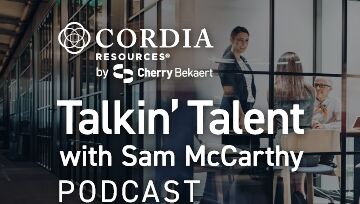The effects of the COVID-19 pandemic have had a major impact on the global shipping industry — disrupting the workforce and leaving vessels marooned around the world, with operators unable to relieve crews who have been at sea for many months due to quarantine and other hastily imposed regulations.
This has caused serious knock-on effects for US manufacturers. Firstly, they’ve had negative implications on revenues especially in March and April when they were shut down — there’s simply no way to offset those losses. And, secondly, demand has now picked up but the supply chain is not yet fully functional again, so many essential parts are stuck on vessels anchored at sea, causing continued disruption to production processes.
Building New Alliances
As global companies grapple with these logistical problems, manufacturers are working closely with their customers to identify which product areas they should prioritize, and ramping up collaboration with suppliers along the supply chain to try and get those parts moving. Strategic business alliances between customers and vendors — something not previously very common in the sector — will be important as companies look to source alternatives or identify new suppliers to help with a certain need in a specific timeframe.
But these are only short-term remediations. The mid- and long-term solution is for manufacturers to revisit their sourcing models, where localization can play an important role, addressing supply chain risks related to international sourcing. However, this can be more costly if not planned and executed holistically for the organization’s supply chain. Sophisticated as it is, even the shipping and marine industry can’t really accelerate the time it takes raw materials to come into the U.S. from China or Southeast Asia. So, the question is, can manufacturers go into new areas and source differently?
Covering All Bases
Dual sourcing (with local and an international supplier for the same part) is not as efficient or optimal from a supply chain perspective because you are working with two different suppliers covering topics like quality management, data exchange, and communication twice.
However, the pandemic has highlighted the risks of being dependent on a single source for critical parts — especially if that supplier is overseas. There are also new layers of customs and safety measures that slow the whole process down, and many companies have had goods sit in customs with no idea when they will receive them.
Automotive and other industrial manufacturers have longer product cycles — in the auto industry they are often based on respective model cycles of four or five years — so dual sourcing is here to stay, for the medium-term at least, as they can’t risk being caught out again. Logic would suggest there is no going back to single sourcing, if new efficiencies can be realized. Although, there is always the chance that businesses will forget about 2020 in regards to supply chain adjustments.
U.S. manufacturers have to decide whether to look at building new facilities or increasing capacities in Mexico, for example, or investing in their footprint in the U.S. The recent US-Mexico trade agreement curbs some of the advantages for going over the border, but’s it still an option for organizations looking to manufacture closer to home, while taking advantage of competitive labor costs.
Meanwhile, another avenue to explore if companies have the capital, is the acquisition of, or further integration with, a supplier, particularly if that source is mission critical for the business. International growth is something manufacturers should think about currently because many companies are in distress or undervalued — this is a good time to seize the opportunity for inorganic growth.
Optimizing Existing Operations
Moving away from supply chain, organizations need to identify the key actions to ensure they can survive and then thrive amidst the current economic uncertainty. The first priority is managing short-term cash flow and debt covenants. If that is proving difficult on the revenue side, then a company needs to be smart on how they operate on the cost side. The second is improving operational efficiencies by, for example, minimizing waste in the production process and conducting a thorough assessment of KPIs. Larger capital expenditures are hard to get approved in the current climate for understandable reasons. Hence, companies need to take a hard look into their cost structure to identify areas for improvement in the existing operations.
More importantly, organizations need to implement smarter use of Data Analytics, Artificial Intelligence, and Robotics. These transformative levers have been around for a number of years without being utilized by manufacturers to their fullest potential. Now the focus is firmly on digitalization — it will no longer be about gaining competitive advantage, but staying with the pack.
In particular, most manufacturers have plenty of good data, but they face challenges in how to generate actionable insights from it. Moreover, it is crucially important that they learn to showcase this information in accessible and meaningful formats — visually appealing dashboards that the top executives, vice president of sales, or the plant manager can understand clearly, and use to make decisions.
Winning the Recovery
This combination of more robust supply chains and reimagined operations — driven by better application of digital technologies — will help companies find their way through the current market turbulence, determining the winners and losers as the economy rebounds. Manufacturers that are able to implement these transformations swiftly and effectively will see a quicker and sustained return to growth.
How Can We Help You Navigate Your Supply Chain Complexities?
Cherry Bekaert can provide guidance to your industrial manufacturing & distribution company, helping you navigate complex supply chain issues.



